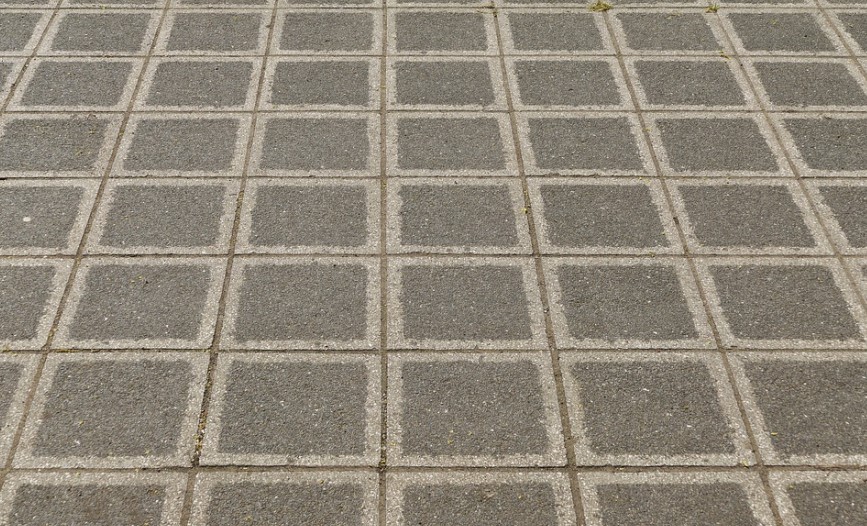Image: https://pixabay.com/photos/pavement-flooring-paving-stones-3347946/
Plastic pavers are increasingly becoming the new, go-to, outside surface consolidation and maintenance material selected by homeowners, architects, builders and engineers. This is because they have significant benefits over traditional paving options such as concrete paving slabs, stone, gravel or asphalt, which tend to require regular maintenance, cause flooding, pollutant runoff, potholes or cracks in extreme weather, and can also be quite aesthetically unappealing and un-friendly to the environment.
Plastic pavers can be installed quickly and easily and can transform outdoor spaces when filled with grass or gravel. They create a superb, durable, walkable, driveable surface that looks great and drains easily.
Despite all these benefits, many people are unaware of just how easy replacement plastic pavers are to use as opposed to traditional hardscape materials. Due to their hollow, cellular plastic construction, plastic pavers are 100% permeable, so water never pools and instead is absorbed into the ground underneath. When filled with gravel or grass, they create a great, more natural looking surface that will not create any ‘heat island’ effect that can happen on hot, sunny days with asphalt and concrete surfaces. In many instances, water runoff can be reduced to zero whilst any pollutants are filtered.
The Right System
There are lots of different plastic paving systems on the market but you will need to ensure that yours complies with SUDS https://www.local.gov.uk/topics/severe-weather/flooding/sustainable-drainage-systems
(Sustainable Drainage Systems) permeable paving standards.
SUDS-rated systems minimise water runoff quantity, improve water quality and provide amenity and biodiversity. Both BREEAM and the Code for Sustainable Homes address the benefits of permeable paving as a SUDS technique and award credits accordingly. What’s more SUDS already forms part of government planning policy.
A typical plastic paving system will consist of porous plastic paving blocks that are connected by an interlocking structure and installed on a porous base course. These blocks help transfer the weight of all loads to the engineered course base below the plastic pavers.
Plastic pavers are also durable, will not rot and are weather resistant. With the right system you should expect a product lifespan of over 10 years, which is more than you could say for surfaces such as asphalt. Despite their strength, plastic pavers are lightweight and easy to manage for quick installation. There are no heavy concrete slabs to manage or barrowloads of asphalt. The interlocking nature of the design of the pavers also means the integrity of the surface remains whatever surface pressure might be applied or whatever extreme weather events might occur.
With a correctly specified and compacted sub-base, a realistic load bearing capacity should be an impressive 250 – 350 tonnes/m2. Once installed, your plastic paving system will require only minimal maintenance, adding to its cost-effectiveness over time.
Product Properties
When making your plastic paving product selection, there are other product properties you should look out for. If you are considering a gravel surface you need NBS (national Building Specification) specification support in relation to Q23, whilst if you are considering grass you need Q30 support. Some systems (https://mcveighparker.com/permeable-plastic-pavers ) also conform to Part M of the Building Regulations which means they are, when correctly laid and maintained, Disability Discrimination Act compliant which makes them perfect for areas surrounding doctors’ surgeries, hospitals and educational establishments.
In terms of sustainability, look for systems that are made from 100% plastic waste as these use materials that would otherwise have gone to landfill, and making this choice helps to reduce the all-important carbon footprint of any building project. Your system, ideally, should also be fully-recyclable at the end of its use and if yours fulfils these criteria you are maximising your eco-friendliness.
Plastic pavers can be used for all sorts of applications including car parks, driveways, cycle routes, pathways, emergency vehicle access roads and GHV service access routes.
Gravel or Grass Finish
Once your plastic pavers have been laid you will need to either fill with gravel or plant grass to complete. For gravel, you fill each individual cell of the plastic paver with Q23 gravel and the best result is usually achieved by using 6-10mm angular aggregate. To ensure the gravel beds in properly and stays in situ you can use a light vibrating plate to settle it and top up the cells if then required, but be careful not to overfill.
If it’s a grass surface you want, you might consider using an additional weed suppressant membrane positioned between the pavers and the sub-base with an application of sharp sand above. This setup will deal with any weeds but still allow rainwater to drain away efficiently. Your grass seeding will need to be carried out in in accordance with NBS section
Q30 for seeding or turfing and it is usually best to use either a 70/30 or 60/40 root zone mixture, initially filled 7-10mm below the surface of each grid as this will protect the grass as it starts to grow.
As with gravel, you can use a light vibrating plate to consolidate the plastic paving blocks and settle the root zone infill. Once complete, you need to seed and water the target area but don’t overfill. Ideally, you should leave the grass around 8 weeks or so to grow and establish itself before allowing traffic onto the surface.

